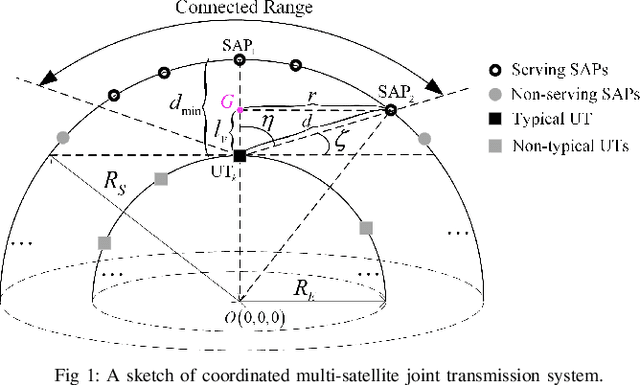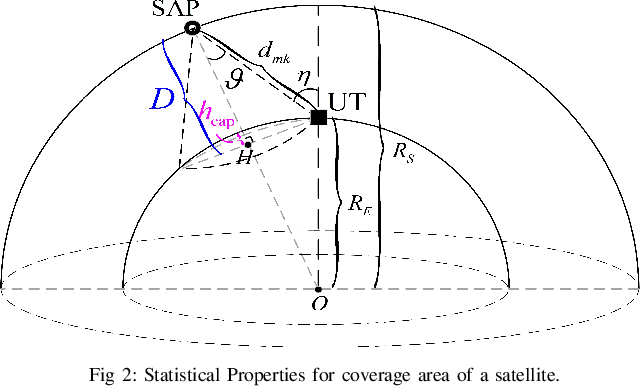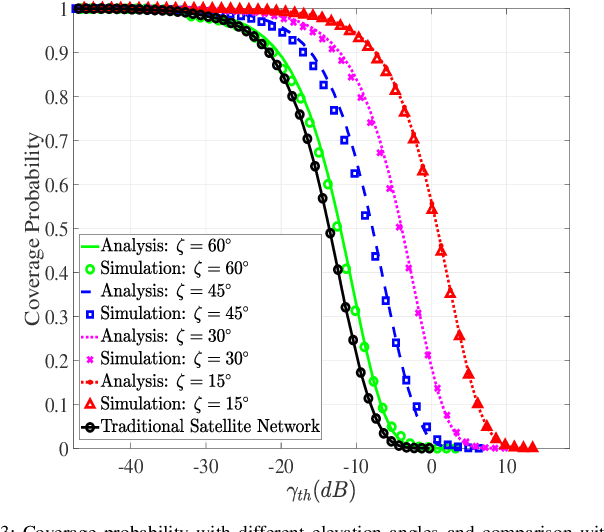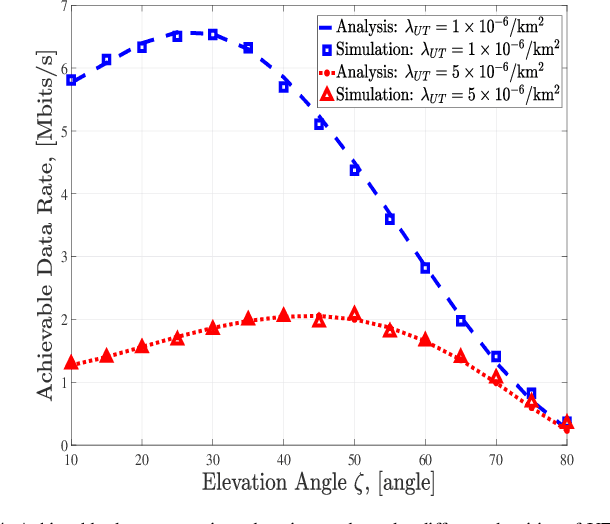Coverage and Rate Analysis for Cell-Free LEO Satellite Networks
Paper and Code
Nov 09, 2023



Low-earth orbit (LEO) satellite communication is one of the enabling key technologies in next-generation (6G) networks. However, single satellite-supported downlink communication may not meet user's needs due to limited signal strength, especially in emergent scenarios. In this letter, we investigate an architecture of cell-free (CF) LEO satellite (CFLS) networks from a system-level perspective, where a user can be served by multiple satellites to improve its quality-of-service (QoS). Furthermore, we analyze the coverage and rate of a typical user in the CFLS network. Simulation and numerical results show that the CFLS network achieves a higher coverage probability than the traditional single satellite-supported network. Moreover, user's ergodic rate is maximized by selecting an appropriate number of serving satellites.
 Add to Chrome
Add to Chrome Add to Firefox
Add to Firefox Add to Edge
Add to Edge